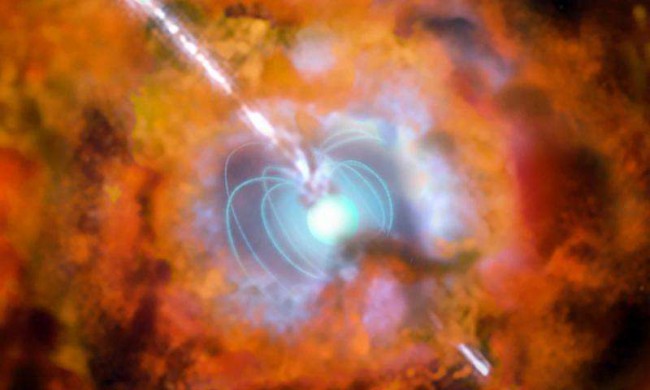The chemical makeup of these ancient stars points to huge explosions called hypernovae. Credit: ESO
November 11, 2015
An international team of astronomers, led researchers from the University of Cambridge and the Australian National University, have identified some of the oldest stars in our galaxy, which could contain vital clues about the early Universe, including an indication of how the first stars died.
These stars, which have been at the very centre of the Milky Way for billions of years, contain extremely low amounts of metal: one of the stars is the most metal-poor star yet discovered in the centre of our galaxy. The stars also contain chemical fingerprints which indicate that the earliest stars may have died in spectacular deaths known as hypernovae, which were ten times more energetic than a regular supernova. The findings, reported today (11 November) in the journal Nature, could aid in understanding just how much the Universe has changed over the past 13.7 billion years.
For decades, astronomers have been trying to determine what the Universe was like soon after the Big Bang – understanding how the first stars and galaxies formed is crucial to this goal. While some astronomers are looking outward to galaxies billions of light years away to untangle this mystery, others are looking inward to the centre of our galaxy.
If you’ve ever looked up at the night sky from a dark place you might see the centre of the Milky Way. There are billions of stars in our galaxy, and astronomers are interested in picking out the oldest stars and finding out about their chemical composition and movements.
Soon after the Big Bang, the Universe was entirely made up of only hydrogen, helium and small amounts of lithium. All of the other elements, like the oxygen we breathe or the sodium in our toothpaste, have been made inside stars or when they die as supernovae. This has led astronomers to search for extremely metal-poor stars: stars with lots of hydrogen, but very little of any other element.
It had been thought that the very first stars formed in the centre of the galaxy, where the effects of gravity are strongest. But after decades of searches, astronomers found that most stars in the centre of our galaxy have a similar metal content of those much closer to us. While the stars at the centre of the galaxy are about seven billion years older than the Sun, they’re still not old enough to understand what the conditions were like in the early Universe.
Click here to view the full article on the Phys.org web page

